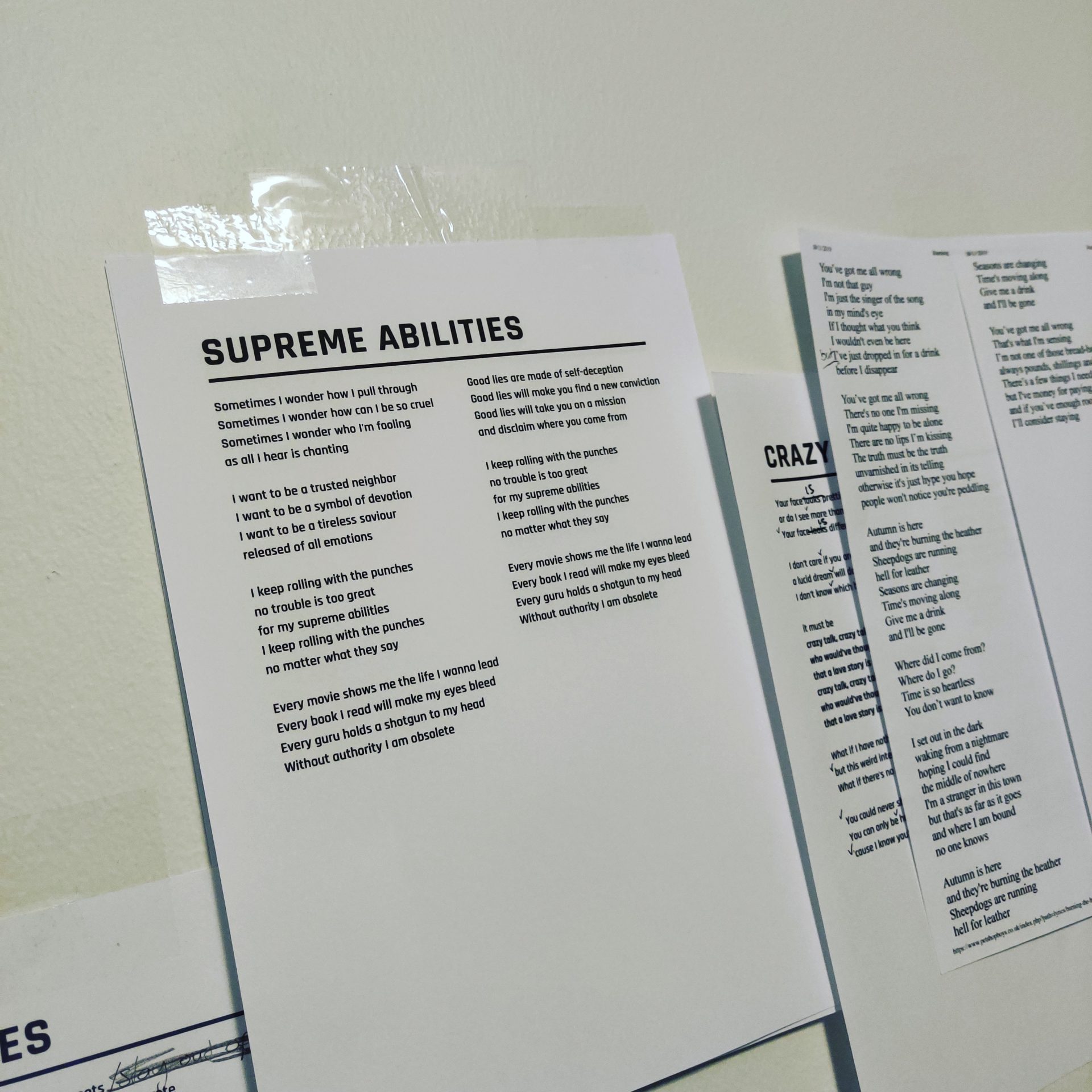I’ve written lyrics for three albums, but I still find lyrics to be the hardest part of songwriting. Recently I joined Scribd, to have an easier access to books on lyric writing. Of course there are similar services like Scribd, but it seemed like a good place to start.
The information in blog posts and on songwriting websites is often scattered, and doesn’t offer a bird’s eye view on lyric writing. I decided to spend some time reading books on lyric writing, because I was stuck with a lyric, and it felt that I needed to know more about what’s going on – why the lyric was not flowing.
I found some useful tips from Sheila Davis‘ books. They’re from the eighties and nineties, but the general principles of writing good pop lyrics haven’t really changed. Of course there are some song forms that are more popular today than a few decades ago, but the tools of storytelling are still very much the same.
Work on your lyrics in sections
Song lyrics need to be in a very specific form. It often takes a lot of trial and error to write a good line. It needs to fit the melody, and it probably needs to have some rhymes as well. I sometimes got lost in the details, even before I was sure about the idea of the song. And as I was constantly coming up with new alternative lines, the bigger picture wasn’t clear anymore. In Sheila Davis’ book, I found this writing technique of reserving a “sandbox” for each section of the song, so that you can simultaneously experiment with single lines, without losing the bigger picture. Writing more lines simply takes a lot of space, and you can easily get lost in the jungle of ideas. So, if you’re writing on paper, have one section on one page, so that you can see what’s going on in each. And if you’re writing digitally, you should have several different documents open, just for one lyric. This makes it easier to come up with new ideas in one sandbox, and see how those lines relate to the other sections of your song. Also, the form in each section is probably different, so you don’t have to keep switching your brain from one setting to another, in order to easily compare the lines.
Write iteratively
Writing should be more about refining than getting it right the first time. As long as you know the story you’re telling, it’s easy to dress it in different words. The hardest part, for me at least, is to come up with the story.

